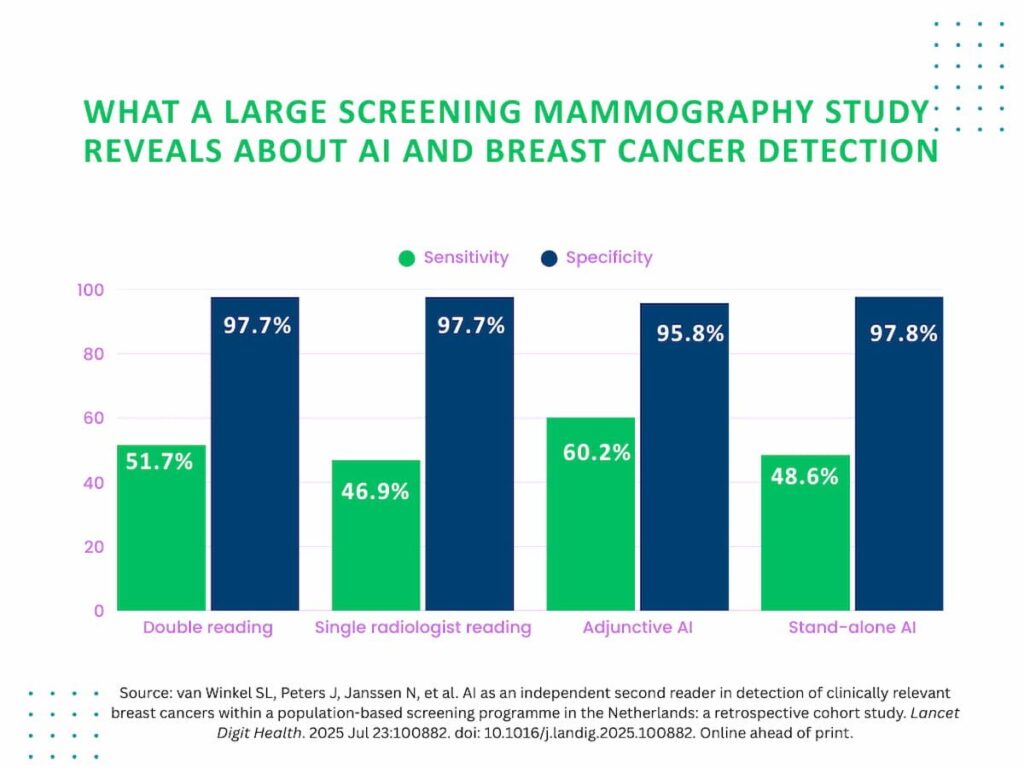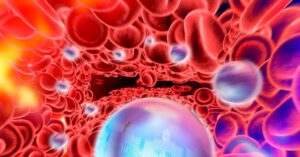
New research published in Lancet Digital Health reveals that artificial intelligence (AI) significantly boosts the sensitivity of breast cancer detection in traditional screening mammography exams. This study, involving over 42,000 women, highlights AI’s potential to improve early cancer detection, particularly in cases of interval and future breast cancers.
The study compared various methods of mammography reading: single radiologist reading, double radiologist reading, stand-alone AI assessment, and a combination of AI with single radiologist evaluation. The findings showed that adjunctive AI achieved the highest sensitivity at 60.2 percent, surpassing double reading by radiologists at 51.7 percent, single radiologist assessment at 46.9 percent, and stand-alone AI at 48.6 percent. Importantly, adjunctive AI maintained comparable specificity to other methods, underscoring its effectiveness.
AI’s Role in Breast Cancer Screening
The use of AI in mammography is not entirely new, but this study provides robust evidence of its efficacy. According to lead author Suzanne L. van Winkel, MSc, from Radboud University Nijmegen Medical Center in the Netherlands, “AI detection of breast cancer in population-based mammography screening is comparable with double human reading.” She noted that while AI might miss some cancers detected by humans, it also identifies others that radiologists overlook.
Among true-positive cases, interval cancers accounted for 8.3 percent of detections with adjunctive AI and 9.9 percent with stand-alone AI, compared to 1.8 percent and 1.3 percent for single and double readings, respectively. This suggests that AI could play a crucial role in detecting clinically relevant cancers earlier.
Implications for Future Detection
The study also highlighted AI’s potential in identifying future breast cancers. Adjunctive AI detected 10.9 percent of future cancers, while stand-alone AI identified 11.7 percent, significantly higher than the 2.2 percent for single radiologist evaluations and 1.7 percent for double readings.
Three Key Takeaways:
- Adjunctive AI improves sensitivity: Combining AI with a single radiologist significantly increased breast cancer detection sensitivity (60.2 percent) compared to double reading (51.7 percent) or radiologists alone, while maintaining comparable specificity.
- Earlier detection of interval and future cancers: Adjunctive AI identified a higher proportion of interval cancers (8.3%) and future cancers (10.9 percent) than radiologists, suggesting the potential to detect clinically relevant cancers earlier.
- Detection of higher-risk tumors: Among AI-detected cases missed by radiologists, over a quarter were invasive cancers and 16.6 percent involved tumors larger than 20 mm, underscoring AI’s potential value in catching more aggressive disease.
Challenges and Considerations
While the study presents promising results, it also acknowledges certain limitations. The authors noted incomplete data on tumor characteristics and suggested that the second reviewing radiologist might have been influenced by the initial reviewer’s results. Additionally, the study relied on a single AI software, and the recall rate for double reading was based on consensus decisions between radiologists.
Van Winkel and her team emphasized the need for extended follow-up studies to confirm the clinical relevance of AI recalls initially deemed false positives. They also suggested that AI could potentially reduce the workload for radiologists, a topic explored in related studies.
As AI continues to integrate into medical imaging, its role in enhancing diagnostic accuracy and efficiency remains a critical area of research. The findings of this study could pave the way for broader adoption of AI in mammography, potentially transforming breast cancer screening and improving outcomes for patients worldwide.






